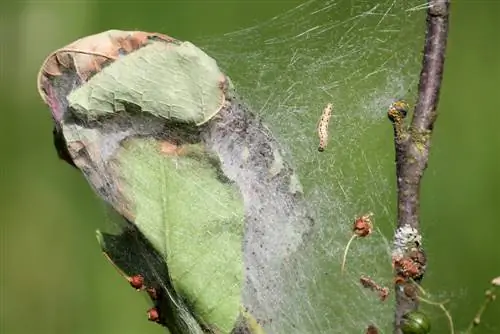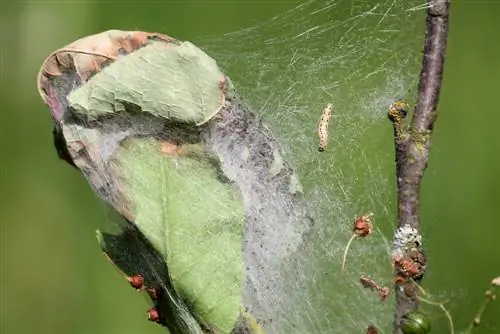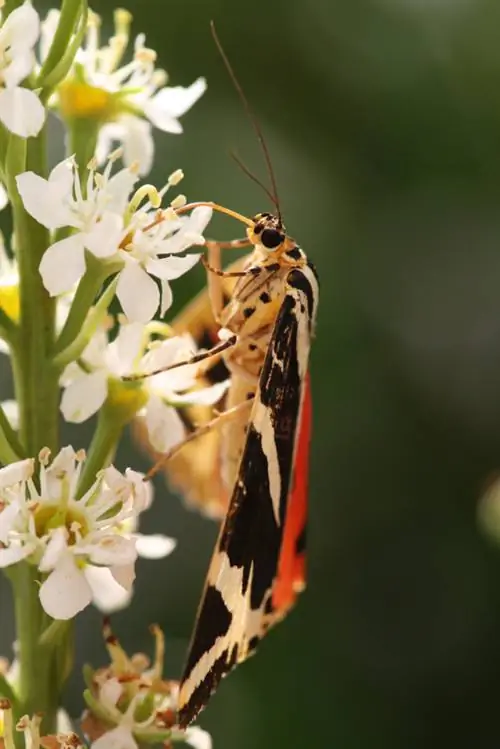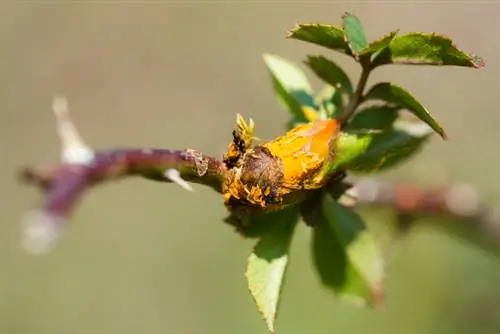- Author admin [email protected].
- Public 2023-12-16 16:46.
- Last modified 2025-01-23 11:21.
The hawthorn is not only a hearty, colorful beauty among hedge plants, but is also completely frost-hardy and compatible with city air. However, one or two diseases can affect the rose family.

What diseases can occur in hawthorn and how can they be combated?
Hawthorn diseases can include fire blight, a reportable bacterial disease, and spider moth infestations. Countermeasures include generous cutting or clearing for fire blight and water jets or manual removal of webs for web moths.
A red descendant of the hawthorn
The cultivar Paul's Scarlet of Crataegus laevigata - the two-handled hawthorn - is considered to be a real hawthorn. It is therefore a carmine-red flowering cultivar of this native hedge plant. Accordingly, the hawthorn has very similar properties and requirements - it delights with the decorative lobed foliage typical of hawthorn and loves the sun and nutrient-rich, chalky soil just like its white-flowering ancestor.
Similar disease risks
Firebrand
Unfortunately, the hawthorn also has certain disease risks in common with the hawthorn. Although it is very tolerant of frost and city air, it is susceptible to fire blight. This bacterial disease is very dangerous and must also be reported to the plant protection office because of its strong transmission potential to other rose plants, especially pome fruit trees.
If a hawthorn is infected, it will show dark-colored branches and dried, burnt-looking shoot tips.
Unfortunately, this disease cannot be easily cured and that is why it is so feared. Without countermeasures, hawthorns die after one to two years, young plants are killed after just two to three weeks.
If the disease is diagnosed (which can clearly only happen in the laboratory), the diseased parts of the plant must be cut out very generously. If the infestation is severe, clearing is necessary. The infected material should be burned if possible, if necessary in a waste incineration plant for larger quantities.
To prevent fire blight, you can use special yeast preparations (€9.00 on Amazon) to prevent the pathogen from penetrating the plant, especially in the riskiest time in summer when the weather is warm and humid.
To remember:
- Fire blight very infectious, notifiable bacterial disease
- If infested, generous pruning or clearing is necessary
- Burn diseased plant material
- For prevention: yeast preparations
Web Moth
Another risk to the he alth of hawthorn is the spider moth. It eats away at the leaves of the plant and covers them with conspicuous, white webs.
The best way to combat an infestation is to start mechanically by spraying the hawthorn with a strong jet of water. It is effective, although laborious, to scrape the pupated caterpillars off the branches in late winter. In the case of web moths that have already hatched, it is difficult for plant protection products to reach the pests through the webs that form - in this case, first remove the webs by hand.






